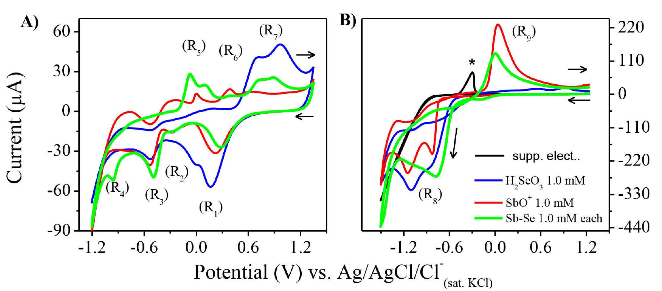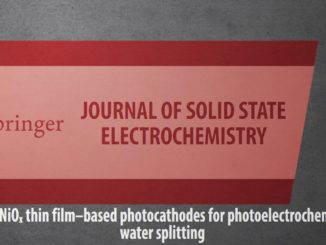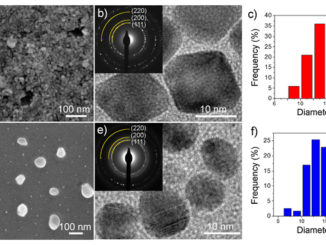
Thermal Treatment Effects on Electrodeposited Sb2Se3 Photovoltaic Thin Films
Abstract: Antimony selenide thin films were prepared through potentiostatic co‐electrodeposition by applying −0.6 V from a bath composed of 2.5 mM K(SbO)C4H4O6 ⋅ 0.5 H2O and 2.0 mM SeO2 in a supporting electrolyte of 0.5 M Na2SO4/H2SO4 at pH 2. The films were subjected to different thermal treatment (TT) conditions under a Se(vapor)/N2 atmosphere. Cyclic voltammetry was used to evaluate the electrochemical process of each element separately as well as the binary system on Pt and FTO working electrodes. The morphology, composition, band gap, crystallography, and photoactivity toward hydrogen gas production of the films were evaluated as a function of TT conditions, in order to obtain insight into their effects on film properties. Under all conditions, the films showed homogeneous and rough surfaces and a stoichiometric Sb2Se3 composition. The non‐thermal‐treated film was non‐crystalline, whereas after TT, all films showed a pure orthorhombic Sb2Se3 phase. It was observed that the crystallographic texturization of films in the (120) plane, caused by some TT conditions, is detrimental to the photoactivity. At the optimized TT conditions (300 °C for 3 h), the film presented good crystallographic and optoelectronic properties and photoactivity, with a photocurrent value of 168.15 μA cm−2 (at the standard hydrogen gas evolution potential) and a band gap of around 1.1 eV.
Author(s): Costa, Magno Barcelos; de Souza Lucas, Francisco Willian; Mascaro, Lucia Helena
Chemelectrochem
Volume: 4 Issue: 10 Pages: 2507-2514 Published: 2017
DOI: https://doi.org/10.1002/celc.201700511
PDF: Thermal Treatment Effects on Electrodeposited Sb2Se3 Photovoltaic Thin Films




